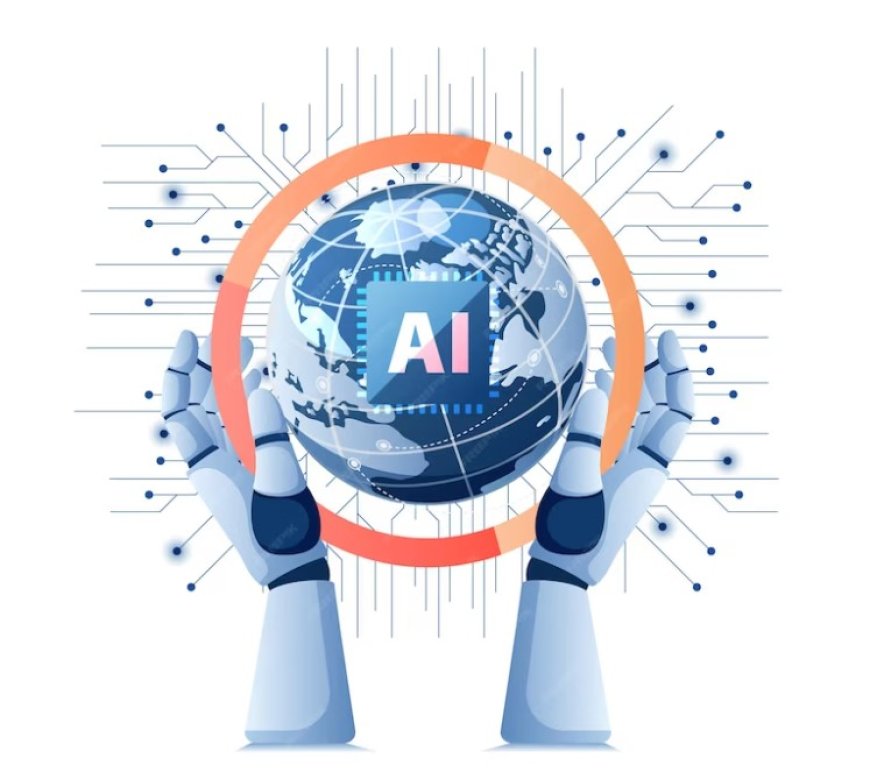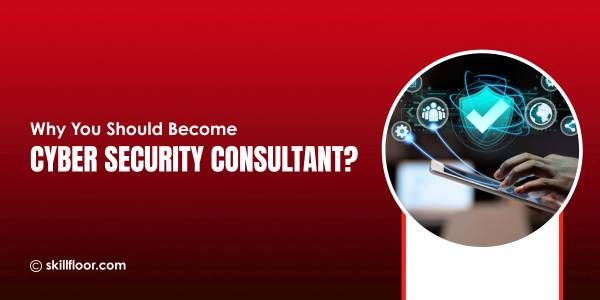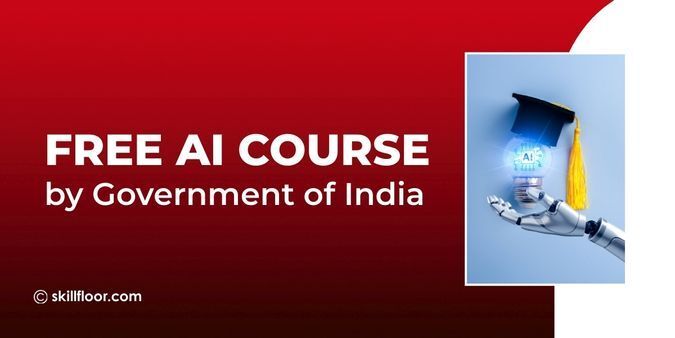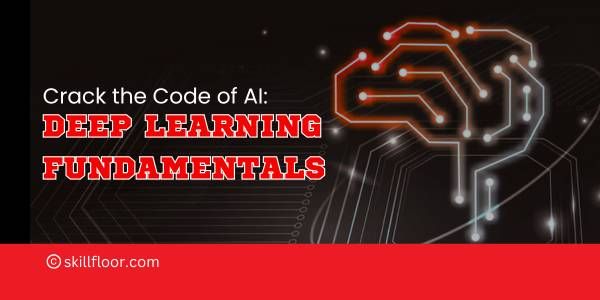Breaking Language Barriers: The Role of AI in Global Communication
Explore how AI is breaking language barriers and revolutionizing global communication. Discover the impact, benefits, and future of AI-powered language.

Communication is the cornerstone of human interaction, enabling the exchange of ideas, thoughts, and emotions. However, one of the most significant challenges in a globally connected world is the diversity of languages spoken by people across different regions. Language barriers have often acted as hurdles, impeding effective communication and collaboration. But with the advent of Artificial Intelligence (AI), the landscape of global communication is undergoing a transformative shift. AI is proving to be a powerful tool in breaking down these language barriers and fostering meaningful connections across cultures and languages.
The Challenge of Language Diversity
Language is a remarkable reflection of human culture, history, and identity. Across the globe, thousands of languages are spoken, each carrying with it a unique set of expressions, nuances, and cultural contexts. This linguistic diversity is a testament to the rich tapestry of human experiences and the myriad ways in which societies have evolved. However, this linguistic mosaic also presents a significant challenge in a world that is increasingly interconnected.
In international business, diplomacy, and everyday interactions, language barriers can hinder effective communication. Misunderstandings due to translation errors, misinterpretations of cultural norms, and the inability to convey emotions accurately can all arise from language differences. These barriers have the potential to limit collaboration, impede negotiations, and hinder the exchange of ideas that are vital for progress.
Moreover, in the digital age, where information is shared instantaneously across borders, language diversity can exacerbate the problem of misinformation. News and ideas can be easily misconstrued when translated without the proper understanding of cultural context, leading to distorted narratives and unintended consequences.
AI as the Universal Translator
In the not-so-distant past, the idea of holding a conversation with someone who spoke a different language seemed like an insurmountable challenge. However, the advent of Artificial Intelligence (AI) has turned this seemingly impossible feat into a reality. AI has taken on the role of a universal translator, breaking down language barriers and facilitating seamless communication between individuals who speak different languages. This technological advancement is revolutionizing the way we interact, collaborate, and conduct business on a global scale.
At the heart of AI's prowess as a universal translator lies the concept of Neural Machine Translation (NMT). NMT leverages deep learning techniques to process and understand the complexities of human languages. Unlike traditional rule-based translation methods, NMT systems learn from vast amounts of bilingual text data, enabling them to grasp the nuances, idioms, and context-specific meanings that make languages unique. This means that AI-powered translation systems can provide translations that are not only accurate but also capture the subtle nuances that are often lost in traditional translation approaches.
Natural Language Processing (NLP) and Real-time Communication
In the realm of artificial intelligence, Natural Language Processing (NLP) stands as a pivotal technology that has opened new doors for seamless communication across languages. NLP is a branch of AI that focuses on the interaction between computers and human language, allowing machines to understand, interpret, and generate human language in a way that feels natural and meaningful. Real-time communication, on the other hand, refers to the instant exchange of information between individuals or groups, often facilitated by technologies like video conferencing, instant messaging, and voice calls.
The convergence of NLP and real-time communication has given rise to transformative possibilities in breaking down language barriers. Imagine participating in an international video conference where participants speak different languages, yet everyone hears the conversation in their preferred language, as if a universal translator were at work. This is precisely the promise that NLP-infused real-time communication holds.
By leveraging NLP algorithms and machine learning models, real-time communication platforms are becoming capable of recognizing spoken language, transcribing it accurately, and providing instantaneous translations. This innovation not only enhances the accessibility of global conversations but also fosters a sense of inclusivity and collaboration among participants from diverse linguistic backgrounds. Furthermore, NLP-driven real-time communication is not limited to spoken language alone – it extends to text-based interactions as well. Instant messaging and chat applications can now automatically translate text messages in real time, allowing individuals to communicate effortlessly, even when they do not share a common language.
Chatbots and Customer Service
-
24/7 Availability: Chatbots provide round-the-clock customer support, ensuring that customers can get assistance at any time, regardless of time zones or business hours.
-
Instant Responses: Chatbots offer quick and instant responses to customer queries, reducing wait times and increasing customer satisfaction.
-
Scalability: Chatbots can handle multiple conversations simultaneously, making them highly scalable and capable of managing a large volume of customer inquiries.
-
Cost-Efficiency: Implementing chatbots can be cost-effective for businesses, as they reduce the need for a large customer support team while maintaining service quality.
-
Consistency: Chatbots provide consistent responses, ensuring that customers receive accurate information and assistance every time they interact with the system.
-
Basic Queries and FAQs: Chatbots excel at handling routine and frequently asked questions, freeing up human agents to focus on more complex and specialized tasks.
-
Personalization: Advanced chatbots use AI algorithms to personalize interactions based on customer data, providing tailored solutions and recommendations.
-
Data Collection and Analysis: Chatbots gather valuable customer data during interactions, which can be analyzed to gain insights into customer preferences, pain points, and behavior.
-
Multilingual Support: Chatbots with language capabilities can offer support to customers in various languages, extending a business's reach to a global audience.
Educational Opportunities
In a world where international travel, business partnerships, and global collaboration are the norm, the ability to communicate across language barriers has become essential. This has heightened the importance of language learning and cross-cultural understanding. While traditional language education methods have long existed, the integration of Artificial Intelligence (AI) into educational platforms has opened up new avenues for enhancing language acquisition and promoting cultural sensitivity. Here's how AI is transforming educational opportunities in the context of language learning:
-
Personalized Learning Pathways: AI-powered language learning platforms have the capability to adapt to individual learners' needs, strengths, and weaknesses. Through the analysis of learner interactions, progress, and performance, AI algorithms can tailor learning pathways to suit each student's pace and proficiency level. This personalized approach ensures that learners remain engaged and motivated, leading to more effective language acquisition.
-
Real-time Feedback and Assessment: AI-driven language learning applications provide learners with instant feedback on their pronunciation, grammar, and vocabulary usage. This immediate feedback accelerates the learning process by allowing learners to correct mistakes in real time. Additionally, AI assessments can accurately gauge a learner's progress, helping educators and learners alike understand areas that need more attention.
-
Engaging and Immersive Learning: AI can make language learning more engaging through interactive exercises, games, and simulations. These activities immerse learners in real-life scenarios, encouraging them to practice language skills in context. Virtual reality (VR) and augmented reality (AR) technologies, often integrated with AI, offer immersive experiences that simulate conversations in different languages and cultural settings.
Ethical Considerations and Cultural Sensitivity
While the advancements in AI language translation are indeed groundbreaking, they come with a set of ethical considerations and challenges, particularly in the realm of cultural sensitivity. As AI systems process and translate languages, they encounter complexities related to cultural context, idiomatic expressions, and the potential for misinterpretation. Let's delve deeper into these ethical considerations and the importance of cultural sensitivity in AI language translation.
-
Contextual Nuances: Languages are rich with nuances and cultural references that might not have direct equivalents in other languages. AI systems, although impressive, may struggle to capture these nuances accurately. For instance, an idiom in one language might not carry the same meaning when translated literally into another language. This can lead to misinterpretations or even offense, particularly in sensitive contexts.
-
Cultural Context: Cultural context plays a pivotal role in determining the meaning of a message. An AI system might not possess the cultural knowledge required to fully comprehend the subtext of a conversation. Without this understanding, the translation might lose its intended meaning, leading to confusion or misrepresentation.
-
Bias and Stereotypes: AI systems learn from vast amounts of data, which can sometimes contain biases present in the text. These biases can inadvertently seep into translations, perpetuating stereotypes and prejudices. It's essential for developers to actively address and minimize such biases to ensure fair and accurate translations.
-
Historical and Political Sensitivities: Certain words, phrases, or topics might be historically or politically sensitive in certain cultures. AI systems need to be trained to recognize and navigate these sensitivities to avoid causing offense or sparking controversy.
The role of AI in breaking language barriers is an ongoing journey with immense potential. As AI continues to improve its language capabilities, it will likely become an indispensable tool for fostering global communication. However, it's important to remember that while AI can facilitate communication, it cannot replace the value of learning languages and understanding different cultures firsthand. AI should be seen as a tool that enhances our ability to connect, collaborate, and learn across borders.


























































